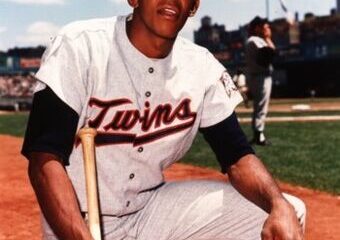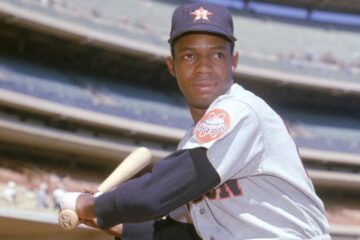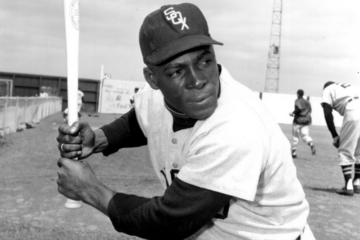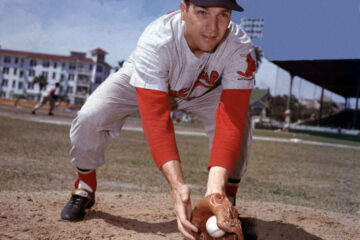2016 Fantasy Baseball: Ichiro Suzuki and the Hall of Fame Index
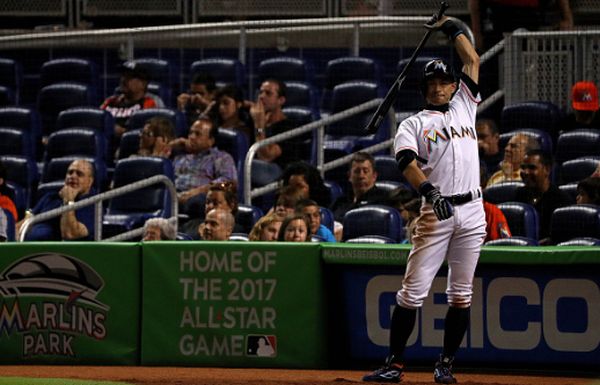
Ichiro Suzuki has gotten a lot of attention this season because he is coming up on 3,000 hits as a big leaguer. Last week he passed Pete Rose for the most professional hits in baseball history if you count his years in Japan. Since he is hitting well over .300 this season, there has been a focus on where he stands in the history of the game. The comparison with Rose is natural, but most of the time we want to compare players with players of their own position.
Several years ago, I wrote The Hall of Fame Index in an effort to make some sense out of the Hall of Fame selection process. I developed a formula that is similar to other formulas created by other sabermetricians. The difference is that I take wins above replacement (or wins above replacement player) from three different sources and add them together. I also included a peak value element. The formula has changed a little since the beginning, but the idea remains the same and the book obviously fleshed out these issues in more detail.
The concept is fairly simple. First, in a simple analysis I don’t concern myself with Veterans Committee selections. They present their own issues which I address in the book in greater detail, but they cause all kinds of problems when you are trying to establish a standard for election. What follows is the basic career value numbers for the eleven players selected by the Baseball Writers’ Association of America and Ichiro’s numbers included.
Career Value
| BR | BP | FG | Total | |
| Babe Ruth | 163.1 | 165.7 | 168.4 | 497.2 |
| Hank Aaron | 142.5 | 147.5 | 136.3 | 426.3 |
| Frank Robinson | 107.2 | 117.9 | 104.0 | 329.1 |
| Mel Ott | 107.8 | 109.1 | 110.5 | 327.4 |
| Al Kaline | 92.5 | 97.6 | 88.9 | 279.0 |
| Roberto Clemente | 94.5 | 90.7 | 80.6 | 265.8 |
| Reggie Jackson | 73.8 | 81.3 | 72.7 | 227.8 |
| Paul Waner | 72.8 | 73.8 | 74.7 | 221.3 |
| Tony Gwynn | 68.8 | 63.3 | 65.0 | 197.1 |
| Dave Winfield | 63.8 | 71.4 | 59.9 | 195.1 |
| Andre Dawson | 64.5 | 60.0 | 59.5 | 184.0 |
| Ichiro Suzuki | 59.8 | 50.8 | 57.9 | 168.5 |
The idea behind using wins above replacement was simple. We wanted to use a single statistic that would simultaneously encompass everything a player contributes on the field along with a way to compare players across generations. The idea behind the index was not to remove debate, but to crystallize it by accurately assessing a player’s value by combining the efforts of advanced statisticians across all of the major platforms. In other words, Baseball-reference, Baseball Prospectus, and Fangraphs may individually miss the boat on any particular player, but if we combine them we get the overall consensus on any particular player.
The index is not designed to definitely say that Reggie Jackson was better than Paul Waner. The difference is an average of two wins in each platform. Two wins over 20 years is a minor amount. The index was designed to find gaps in the data. Any individual voter can set the bar wherever they want. If they want to say Dave Winfield and Andre Dawson should not be Hall of Famers then that is their prerogative. However, they should have an idea where their standard lies and apply it accordingly.
The use of WAR was meant to avoid the use of statistical milestones guaranteeing enshrinement. Ichiro will get to 3000 hits this season barring injury. Should that give him an automatic ticket into the Hall of Fame? If you buy the book you will notice numerous examples where players achieved certain milestones, but the index numbers indicated they shouldn’t have been elected. Ichiro’s numbers indicate he is short if you only include his major league numbers. However, if we assume he would have naturally made his debut at age 22 then we could add to his index score. We don’t have to make it up out of hand. We can simply take the average of his first ten seasons and add that to each score. If we do that, we find the following for his career value.
Baseball Reference: 87.6
Baseball Prospectus: 75.3
Fangraphs: 84.5
Adjusted Career Value: 247.4
In other words, if Ichiro had spent his entire career over here, he might have approximated the value of Reggie Jackson or Roberto Clemente. Granted, he was a very different player than either of them, but his value would have likely been similar. Of course, career value was only a part of the equation. Some players spread their value out over 20 plus seasons while others see their value bunched into ten or twelve seasons. The Hall of Fame has always been a place for the very best. Sometimes a player can be pretty good for a very long time. The Hall of Fame typically doesn’t like pretty good. So, we take the player’s best ten-year stretch and call that his peak value.
Peak Value
| BR | BP | FG | Total | |
| Babe Ruth | 103.8 | 106.8 | 109.8 | 320.4 |
| Hank Aaron | 80.6 | 77.8 | 76.3 | 234.7 |
| Mel Ott | 70.3 | 71.4 | 72.5 | 214.2 |
| Frank Robinson | 64.7 | 70.2 | 59.0 | 193.9 |
| Roberto Clemente | 68.9 | 66.0 | 58.8 | 193.7 |
| Reggie Jackson | 57.0 | 62.0 | 54.5 | 173.5 |
| Al Kaline | 53.4 | 63.2 | 55.8 | 172.4 |
| Paul Waner | 54.4 | 55.8 | 57.1 | 167.3 |
| Tony Gwynn | 48.7 | 45.0 | 45.1 | 138.8 |
| Andre Dawson | 48.5 | 43.1 | 45.0 | 136.6 |
| Dave Winfield | 44.0 | 48.8 | 38.1 | 130.9 |
| Ichiro Suzuki | 55.5 | 49.0 | 53.2 | 157.7 |
This is where the rubber meets the road and where you see the starkest differences between players. The gap between Paul Waner and Tony Gwynn is more than significant and notice that Ichiro comfortably beats Gwynn, Dawson, and Winfield in peak value. When we add these numbers together we begin to see more separation. Again, this doesn’t mean that Gwynn, Dawson, and Winfield shouldn’t be Hall of Famers. It’s just obvious that they are not at the level of the other guys the BBWAA has voted in.
The Hall of Fame Index
| Career | Peak | Total | |
| Babe Ruth | 497.2 | 320.4 | 817.6 |
| Hank Aaron | 426.3 | 234.7 | 661.0 |
| Mel Ott | 327.4 | 214.2 | 541.6 |
| Frank Robinson | 329.1 | 193.9 | 523.0 |
| Roberto Clemente | 265.8 | 193.7 | 459.5 |
| Al Kaline | 279.0 | 172.4 | 451.4 |
| Reggie Jackson | 227.8 | 173.5 | 401.3 |
| Paul Waner | 221.3 | 167.3 | 388.6 |
| Tony Gwynn | 197.1 | 138.8 | 335.9 |
| Dave Winfield | 195.1 | 130.9 | 326.0 |
| Andre Dawson | 184.0 | 136.6 | 320.6 |
| Ichiro Suzuki | 168.5 | 157.7 | 326.2 |
First, we should talk about what the index is not. It is not a system designed to rank players. It cannot definitively tell us that Mel Ott was a better baseball player than Frank Robinson. It certainly isn’t going to emphatically argue that Ichiro is better than Dave Winfield was on the basis of 0.6 of a win. I certainly could argue that he is better than Gwynn, Dawson, and Winfield, but I wouldn’t use the index to do that. That is a much better argument reserved for a sports bar or beer in the backyard. What the numbers do indicate is that even without giving him those extra five seasons, he is probably fit for the Hall of Fame.
Of course, there are others currently on the outside looking in that are probably better than the bottom three. That is one of the things that makes the process a little cumbersome, but also fascinating to discuss. The index was never designed to remove debate. It simply gives it more focus as now fans could have a lively discussion between certain players at certain positions. Needless to say, when you watch Ichiro in person or on MLBtv, just know that you are likely getting to see a Hall of Famer at work.


